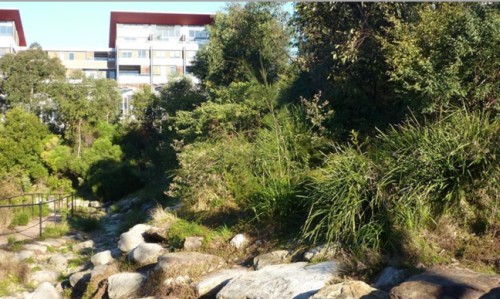Five landcare/bushcare groups worked in Glebe throughout the year to support the establishment and maintenance of biodiversity in our suburb’s parks. The Subcommittee has 12 members, including representatives from each of these groups, and met on seven occasions during the year; all members of the Society are always welcome to join the Subcommittee and attend our meetings. Of special importance has been the involvement of so many local residents in the general care of their neighbourhood parks and in the planting of native flora. We were able to provide financial support for the groups, eg by purchasing wooden stakes to help protect the new native shrubs in John St Reserve. During the year, the Subcommittee valued its collaborations with Sophie Golding, the City of Sydney Urban Ecologist and Nick Criniti, the City of Sydney Parks Coordinator, as we worked to increase the diversity, abundance and distribution of indigenous fauna and flora.
Inadequate insurance cover for the volunteer members of the bushcare groups in Glebe is a continuing problem. Should a claim be made against the City’s public liability insurance policy related to the work of a bushcare group, the City expects the volunteer members of the group to pay the first $500 of any successful claim (even though each group has no financial assets). In a letter to the City, the Society stated ‘It seems quite unreasonable to expect group members to pay this cost personally when their role is to work voluntarily for no personal profit or gain to improve their local neighbourhood environment.’ In another ongoing matter the Palmerston and Surrounds Landcare Group has been asking since 2015 that the City install a tap in the lower section of Palmerston Avenue Park near the Glebe Light Rail stop so that their plantings of native flora can be watered. Hopefully both issues will be resolved in the coming year! On a more positive note, the City agreed to the Society’s request that a dying Ficus obliqua (Morten Bay Fig) in Jubilee Park near the light rail stop not be removed but heavily pruned and retained as a ‘habitat’ or ‘stag’ tree. The tree will provide an important resource for Glebe’s wildlife.
The Society’s fourth annual spring bird survey was held at 7am on Sunday 23 October – we saw 466 birds of 30 different species in eight of Glebe’s foreshore and pocket parks. The most common bird was the Rainbow Lorikeet followed by the Noisy Miner, but unfortunately no Blue Wrens were found. However, Willy Wagtails who enjoy the same habitat were seen in Johnstons Creek near the Tramsheds. A highlight was the sighting of an unidentified raptor (Peregrine Falcon or Brown Goshawk) in weedy trees near the Jubilee Park Light Rail stop. This year’s survey will be on Sunday 24 September and all Society members with an interest in birds are invited to attend.
For a third year the Subcommittee organised a talk about an aspect of biodiversity that was important for Glebe. On 24 May, Professor Chris Dickman, Professor in Ecology from the University of Sydney, spoke to 34 Society members and their friends about the ‘Impacts and local management of cats, dogs and foxes’. He described the results of research studies on the predatory habits of cats in the eastern suburbs of Sydney which showed that domestic and stray cats are very efficient hunters of small native fauna and rats, and tend to specialise in a particular species eg some will hunt and kill small birds while others are very successful at hunting lizards or rodents. If you allow your cat to spend time in the garden, recent studies at Murdoch University in Perth have shown that fitting a small brightly coloured vest/bib to cats when they are outdoors stopped over 80% of cats killing wild birds and reduced small animal predation by almost half. The main impact of dogs on our local wildlife is one of fear and even a leashed dog will cause birds to fly away to a safer area. Despite the lack of sightings, it would not be a surprise to find that foxes are living in Glebe as they have found safe habitats in parks and golf courses in other inner city regions. As far as their diet is concerned, foxes compete with cats by feeding on rodents and native fauna.
To celebrate World Environment Day, Sophie Golding, Urban Ecology Coordinator with City of Sydney, facilitated a guided walk through Orphan School Creek, Forest Lodge on Sunday 4 June. Judy Christie led the walk which was attended by about 25 people including the City’s Coordinator of Glebe’s local parks, Nick Criniti.

The Subcommittee gratefully acknowledges a generous bequest it received from the estate of the late Jan Craney, a former convenor, as well as a further donation from Mary Holt. These funds will be used to organise planting days and other events, which actively promote the enhancement of biodiversity in our parks, school grounds, light rail corridor, and private gardens. They will also be used to foster the education of residents, school children, businesses and others leading to an increased awareness of the value of native plants and animals in our suburb.










There are no comments yet. Please leave yours.